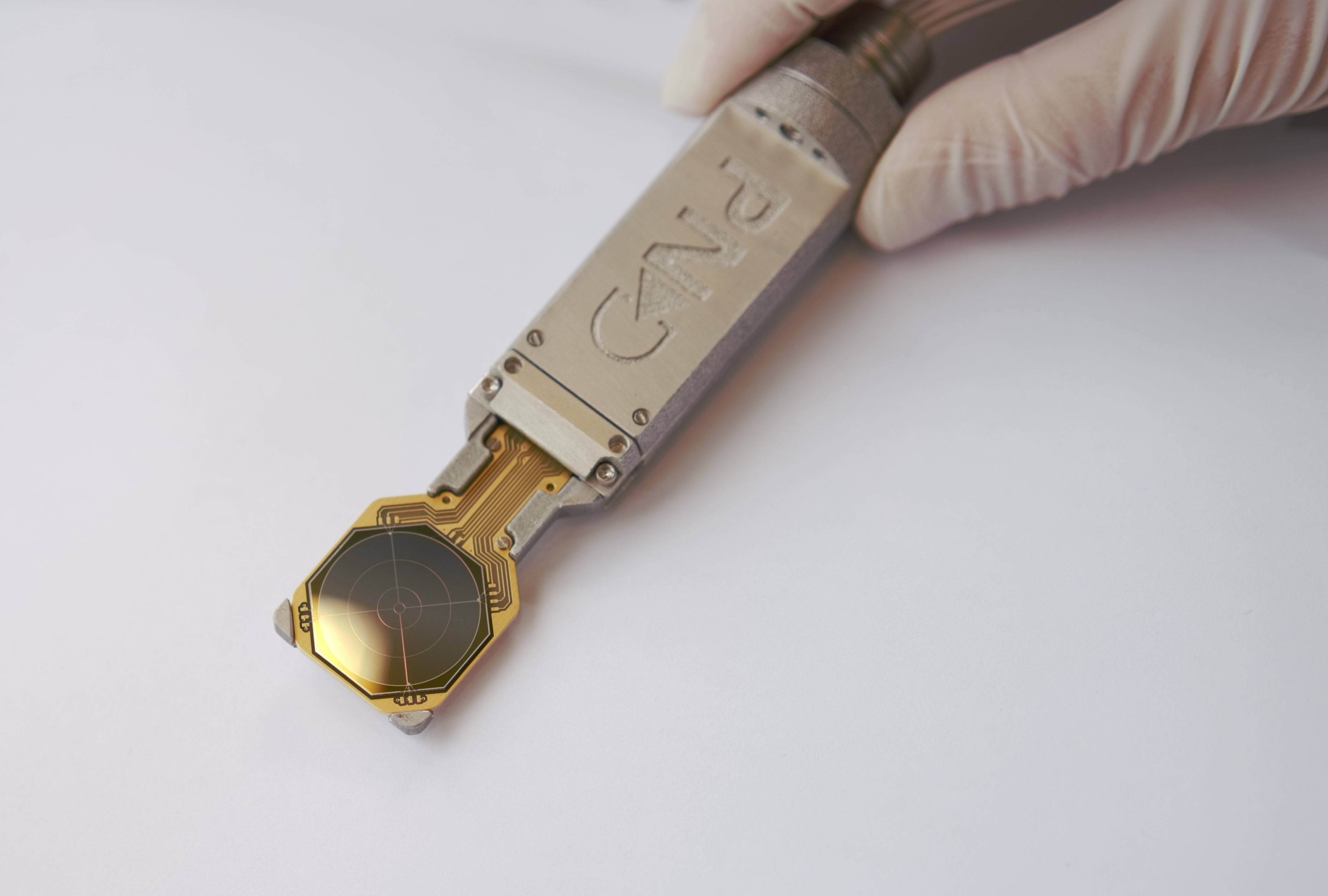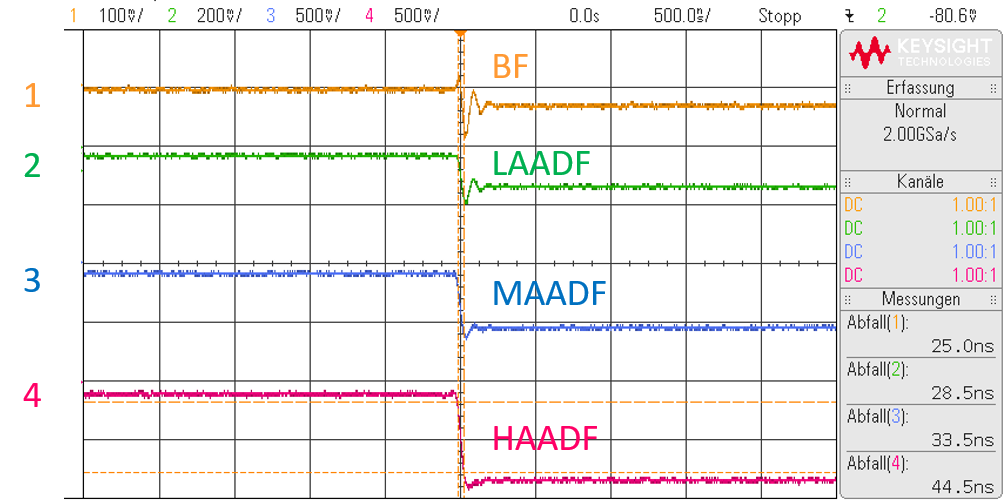A multi-cell STEM diode detector for parallel acquisition of up to 16 channels with integrated high-speed electronics
- Abstract number
- 753
- Event
- European Microscopy Congress 2020
- DOI
- 10.22443/rms.emc2020.753
- Corresponding Email
- [email protected]
- Session
- PST.3 - New Instrumentation
- Authors
- Friederike Michael (1), Dr. Maximilian Schmid (1), Andreas Liebel (1), Daniel Steigenhöfer (1), Dr. Heike Soltau (1)
- Affiliations
-
1. PNDetector GmbH
- Keywords
imaging, preamplifier, STEM diode
- Abstract text
Scanning transmission electron microscopy (STEM) has proven to be an important addition to electron microscopy techniques. Both in scanning electron microscopes (SEM) as well as in transmission electron microscopes (TEM) it has led to significant improvements regarding material analysis. TEMs usually operate with electron energies between 100 keV to 300 keV and reach atomic scale resolution. For applications where such high resolution is not necessary samples are investigated in an SEM with electron energies up to typically 30 keV.
Since there are many applications for a STEM detector in different microscopes, it needs to fulfill certain requirements. It has to function for a vast range of electron voltages from as low as 5 keV or less, up to 300 keV. For applications in SEM the detector needs to be fast enough to work with high scan speeds. Plus, the signal-to-noise ratio (SNR) has to be sufficiently high, so even the smallest signals can be detected. Additionally, a large detection area allows the examination of specimens with high scattering angles.
The electron sensitive area of the presented STEM diode has a diameter of 22 mm and is divided into 13 cells. One bright field (BF) cell and three annular dark field (ADF) rings, each segmented into four quadrants. This design covers a large scattering angle range and thus provides improved contrast imaging for elements with various scattering angles. The low-angle ADF (LAADF) for defect contrast imaging, the medium-angle ADF (MAADF) to get phase contrast information and the high-angle ADF (HAADF), which is an imaging technique often used in TEM to investigate the atomic number of a sample. Also, the segmentation into quadrants allows for advanced techniques such as Differential Phase Contrast (DPC) measurements. This diode structure enables you to gather all this information at once. To obtain high image quality for applications with fast scan speeds the detectors also require a stable and reliable high-speed readout electronic.
The presented STEM detector includes an integrated pre-amplification circuit, which supports the acquisition of up to 16 single channels. Figure 1 shows a STEM diode detector system with 13 segments, coupled to the pre-amplification unit. The circuit is directly integrated into the detector assembly and joined closely to the STEM diode, which enables high-speed readout of every single chip segment. Each of the 16 channels are amplified independently from another and allow the acquisition of many different information in a parallel manner. Thus, the user can mix the output of the channels in any way the application requires.
We measured signal rise times in the range of 25 ns to 50 ns, depending on the diode segment. Each channel was measured with the same amplification factor. Figure 2 shows the step response measurements of the BF cell and one segment of each ADF ring, measured with a fast LED signal. The bright field has a rise time of 25 ns with a signal amplitude of approximately 30 mV, whereas the rise time of the HAADF cell is 45 ns and its signal height lies by 750 mV. It can be seen that the rise time and signal amplitude is proportional to the size of the measured cell. Despite the large chip area, we still see very low noise in the channels. This is due to our low leakage current fabrication facility and the fact that the STEM diode is fully depleted, which leads to very low signal capacitance values of a few picofarad only.
Depending on the systems requirements the amplification of each channel can be modified and set to an individual value. Additionally, the new PNDetector STEM module is compatible with a motorized retraction mechanism, which allows convenient and precise detector positioning. Both the multi-cell diode structure as well as the 16-channel pre-amplification unit contribute to provide multiple applications for STEM in SEM and TEM. Further details and measurement results of this new multi-cell STEM detector will be presented.
Figure 1: 13 channel STEM detector module with integrated 16 channel preamplifier. The diode consists of a bright field (inner cell) and three Annular Dark Field (ADF) rings. Each ring is divided into four quadrants. The diode is connected to a pre-amplifying unit that allows single and parallel readout of every segment.
Figure 2: Step response of four cells of the STEM detector. Please note that the scaling differs from channel to channel. The amplification factor is the same for each measurement. All results were obtained at room temperature.
The yellow curve shows the bright field. It has a signal rise time of 25 ns and a signal amplitude of 30 mV. The green curve equates to one segment of the LAADF. The blue and pink line show one segment of the MAADF and HAADF, respectively.
- References


